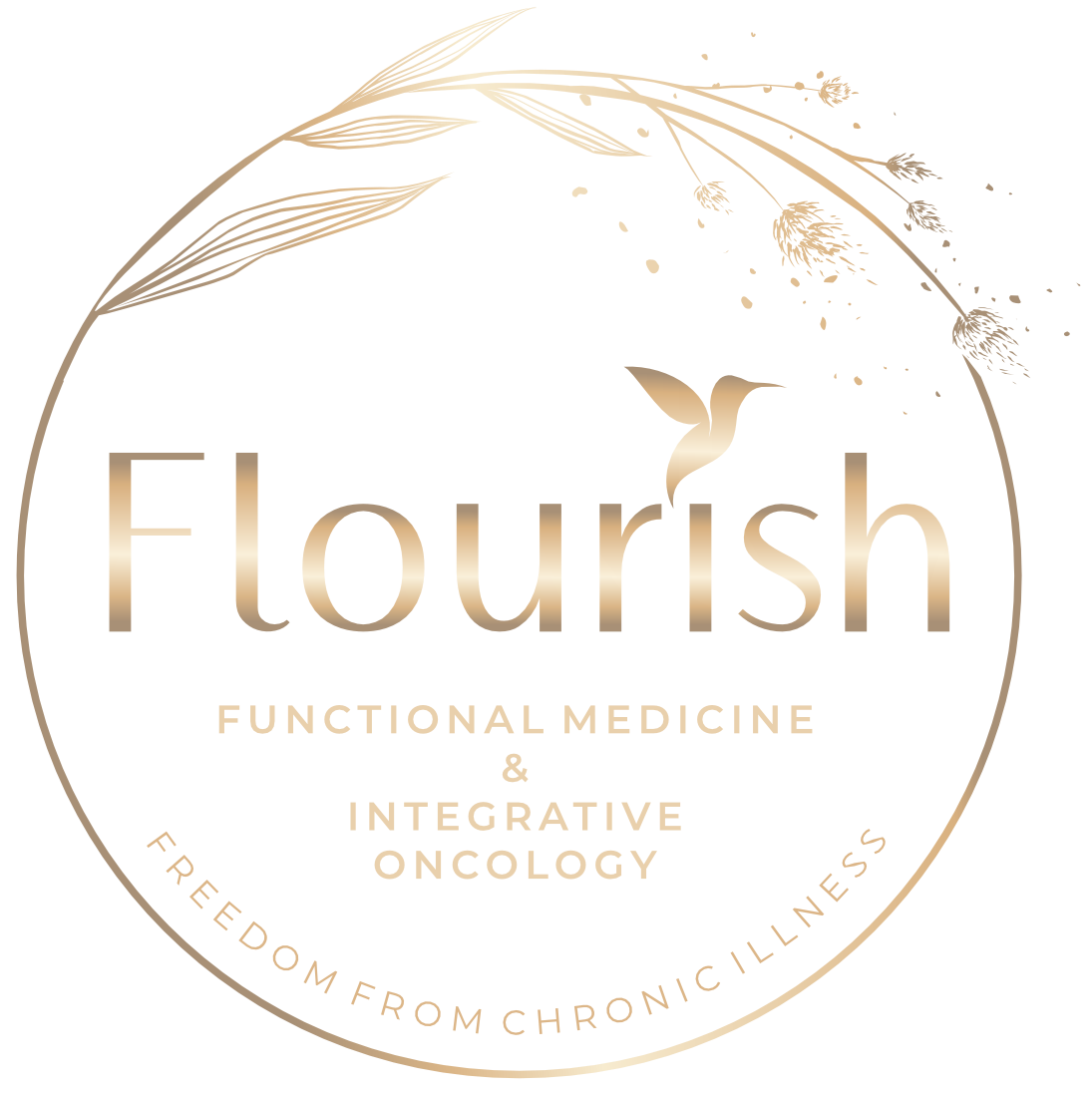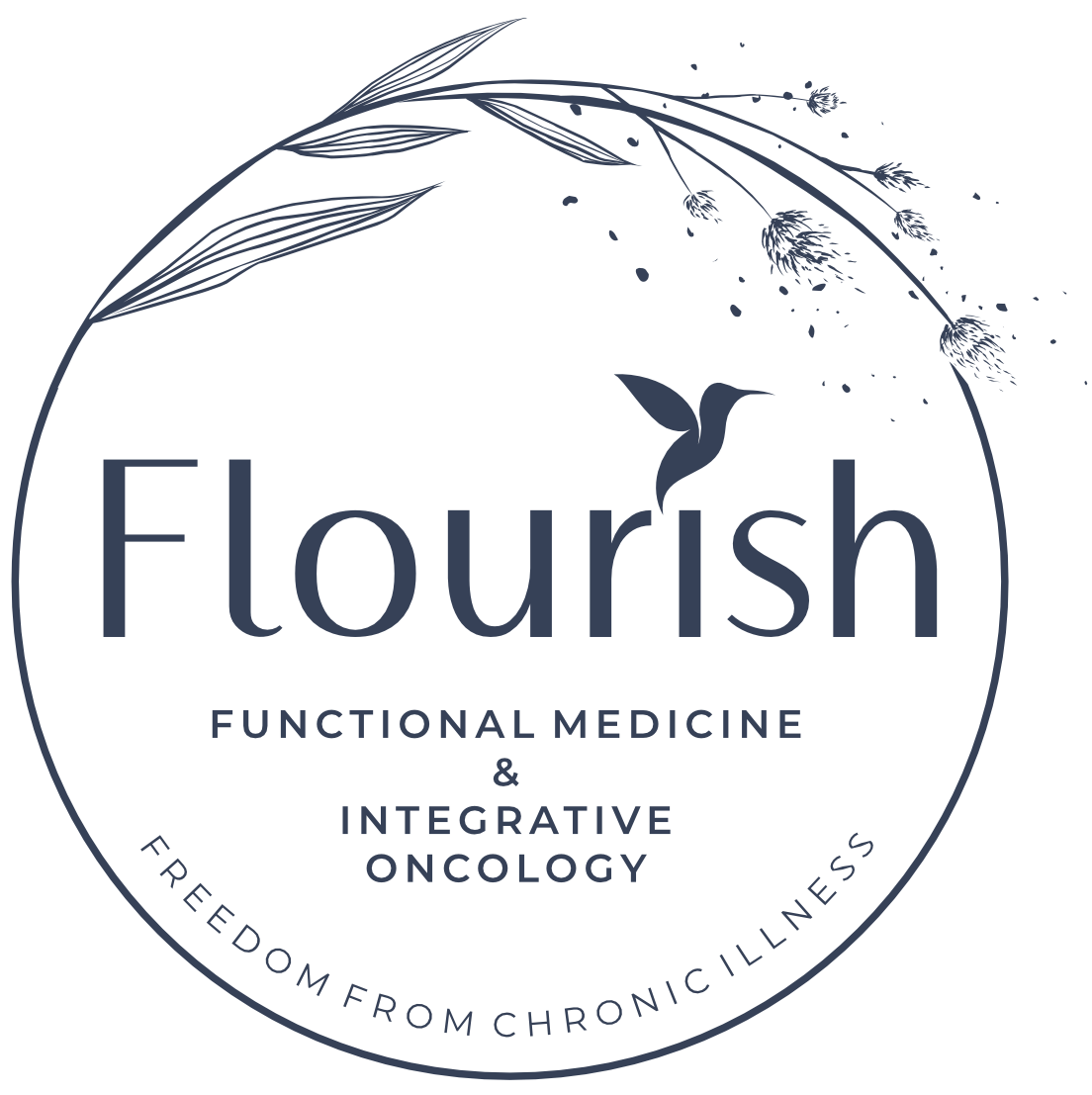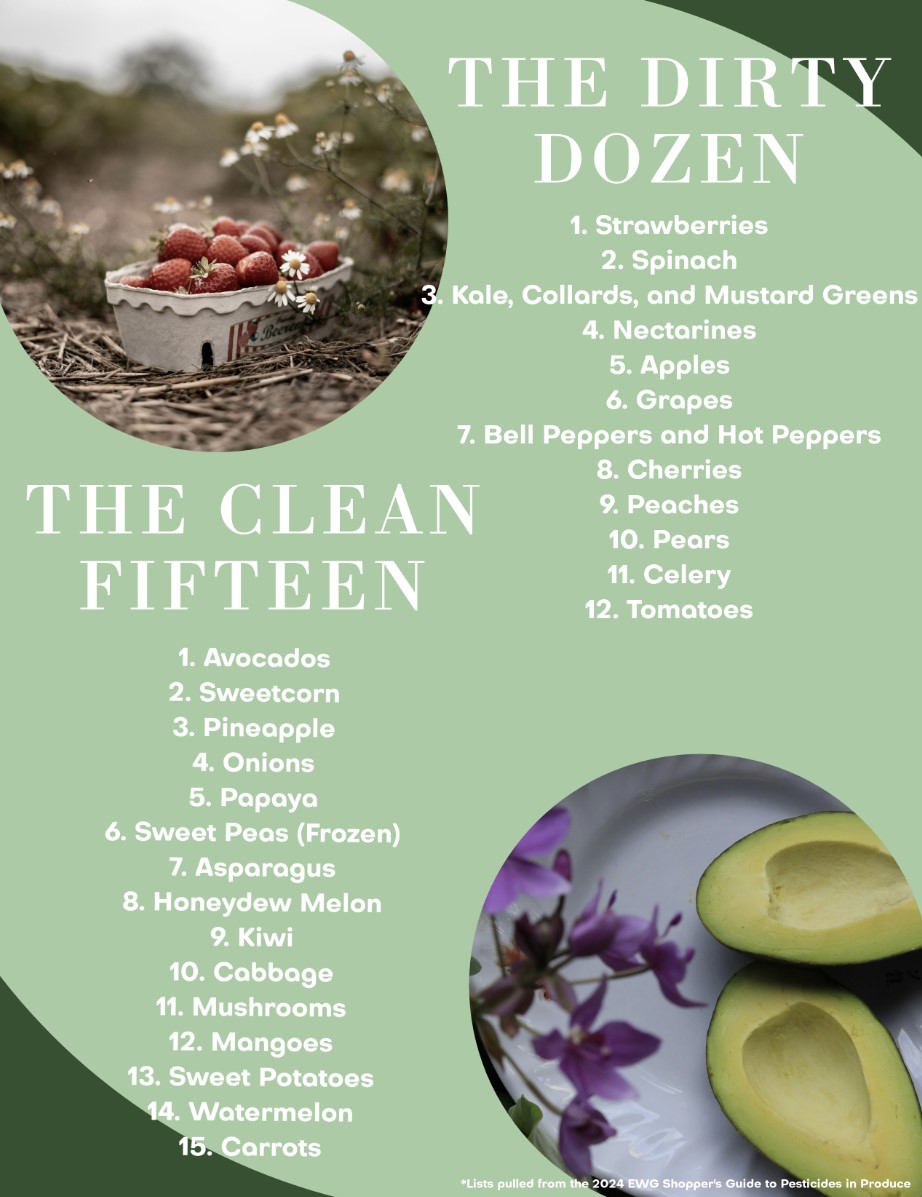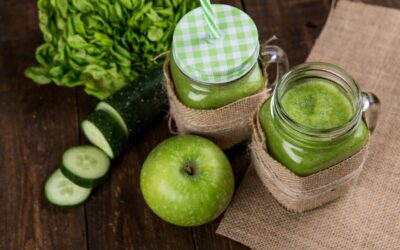The “Dirty Dozen” is a list of fruits and vegetables, compiled by the Environmental Working Group (EWG), that you should eat organically to minimize your exposure to pesticides.
By opting for organic versions, you can significantly reduce your exposure to these harmful chemicals while also supporting sustainable farming practices.
Below, you’ll find the “Dirty Dozen” list, alongside the “Clean Fifteen,” which highlights produce with the lowest pesticide residues.
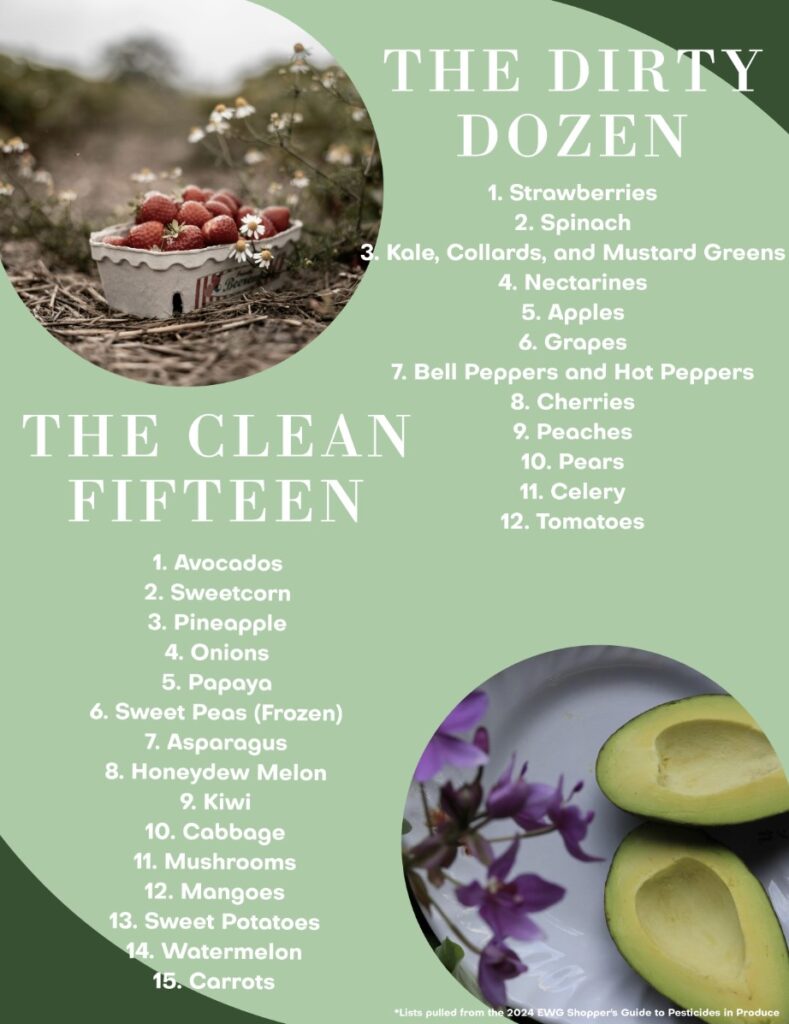
- Strawberries
- Spinach
- Kale, Collards, and Mustard Greens
- Nectarines
- Apples
- Grapes
- Bell Peppers and Hot Peppers
- Cherries
- Peaches
- Pears
- Celery
- Tomatoes
- Avocados
- Sweetcorn
- Pineapple
- Onions
- Papaya
- Sweet Peas (Frozen)
- Asparagus
- Honeydew Melon
- Kiwi
- Cabbage
- Mushrooms
- Mangoes
- Sweet Potatoes
- Watermelon
- Carrots
While the “Dirty Dozen” list may raise concerns for consumers, it’s crucial to appreciate the overall health benefits of consuming fruits and vegetables, no matter their cultivation method. Studies consistently affirm that the health perks of a diet rich in plant-based foods significantly overshadow the potential risks from pesticide residues. Opting for organic selections from the “Dirty Dozen” list can also provide reassurance, especially for those wary about the long-term effects of chemicals commonly utilized in conventional agriculture.
On the flip side, the “Clean Fifteen” list features fruits and vegetables typically found to have lower levels of pesticides when grown conventionally. This list helps those who are budget-conscious determine which produce items to purchase organic. Items like avocados and sweet corn, which lead the list, are protected by their robust skins or husks, effectively guarding the edible parts against pesticide contamination.
Moreover, adopting organic farming practices benefits not only the consumer but also the environment. Organic agriculture depends on methods such as natural pest control, crop rotations, and composting. These practices enhance soil quality, foster biodiversity, and lessen the environmental footprint of farming. By choosing organic where feasible, you not only safeguard your health but also support a more sustainable and environmentally conscious food system.
Ultimately, deciding to incorporate more fresh fruits and vegetables into your diet, organic or not, remains an excellent choice for enhancing your health. The “Dirty Dozen” and “Clean Fifteen” lists serve as valuable resources to assist you in making more informed purchasing decisions, helping you maximize the nutritional benefits of your meals while reducing exposure to potential contaminants.
Facts from the Environmental Working Group (EWG)
- Clean 15
- “These 15 items had the lowest amounts of pesticide residues, according to EWG’s analysis of the most recent USDA data.”
- “65% of Clean fifteen samples collected had zero detectable pesticides.”
- “No more than three pesticides appeared in samples of the first six Clean Fifteen items.”
- “<2% Avocados & Sweet corn showed any detectable pesticides, making them the cleanest fruits & veggies on the list.”
- “10% of Clean Fifteen fruit and vegetable samples contained two or more pesticides.”
- Dirty 12
- “Of the 46 items included in our analysis, these 12 fruits and vegetables were most contaminated with pesticides:”
- “90% of samples of strawberries, apples, cherries, spinach, nectarines and
- grapes tested positive for residues of two or more pesticides.”
- “209 pesticides were found in total.”
- “13 – 23 pesticides in at least one sample of each item.”
- “50 different pesticides were detected on every type of crop on the list, except cherries.”
- “100 total pesticides detected Kale, collard and mustard greens, as well as hot peppers and bell peppers.”
